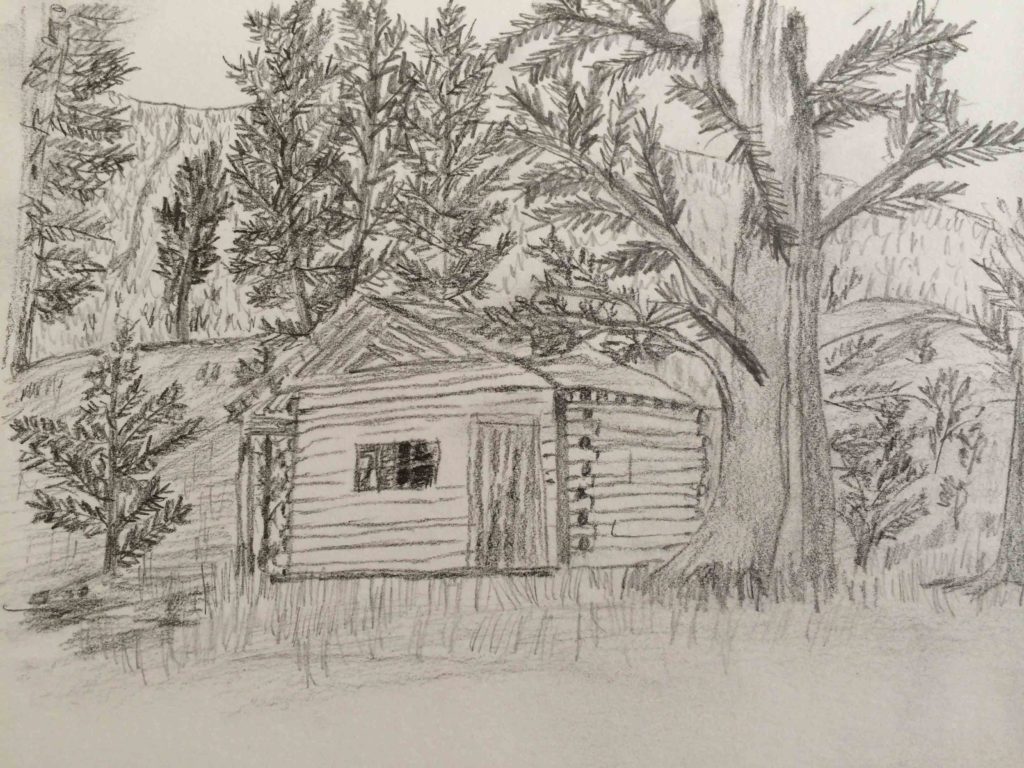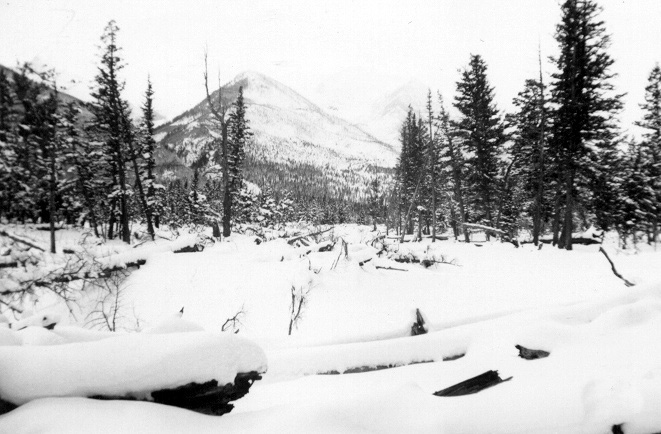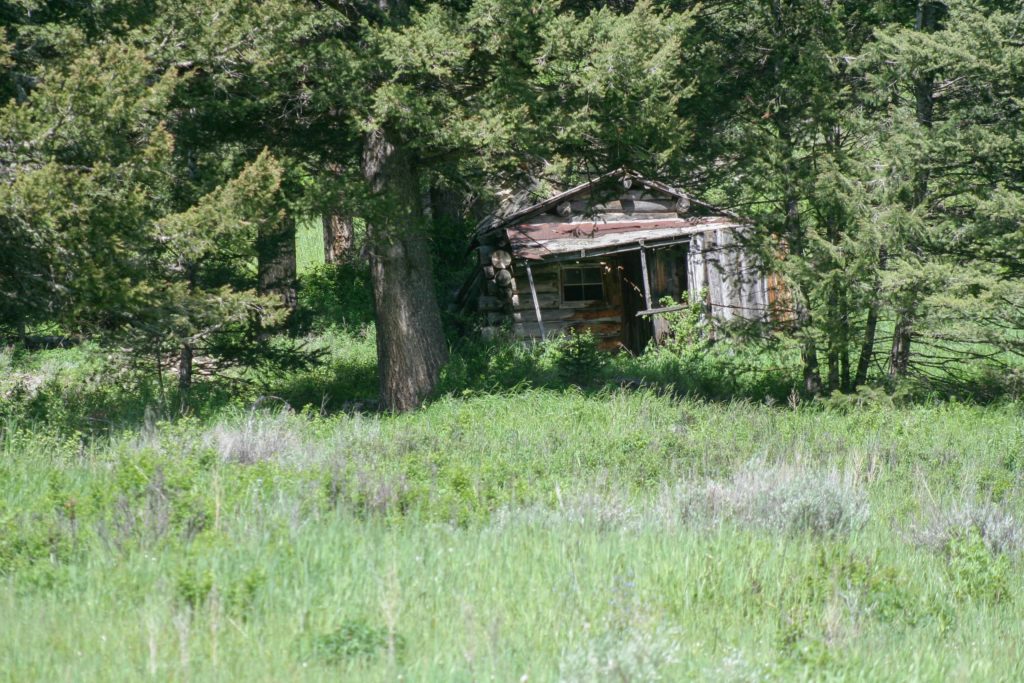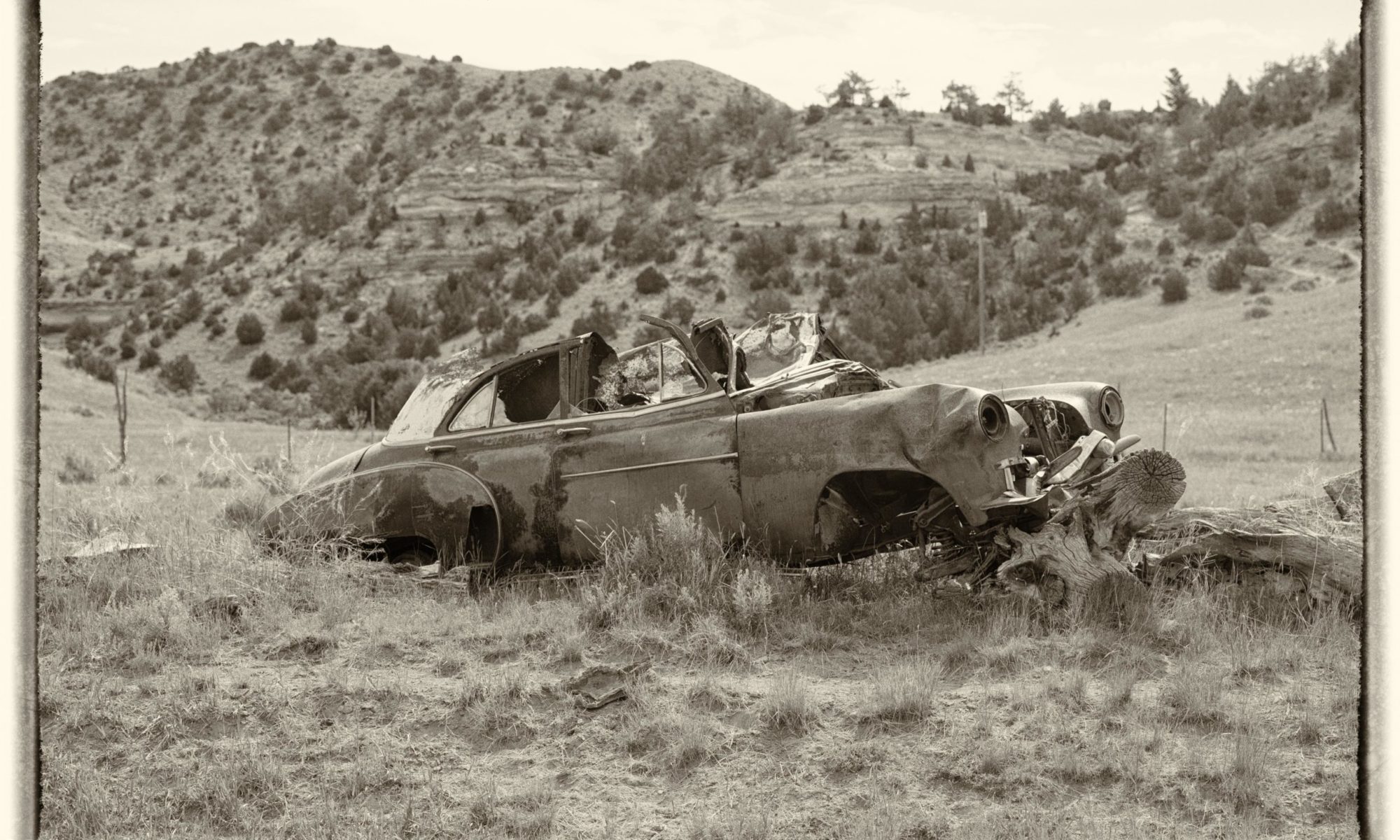My Guest Author today is my Dad
in his recounting of the Logger’s Cabin
Ours was the last place on the Sweet Grass, and then a logger’s cabin was built on the Forest Section about three-quarters of a mile west of Gommie’s Lake and maybe a quarter of a mile beyond Ward and Parkers’ boundary fence. The cabin was located down under the hill below the road. It was put up in the fall or late summer and was right next to the steep bank that led up to the road. Billy Briner and two Reynolds boys from Melville were the first residents. They had a log contract for two dollars a thousand feet. That would give them more than a dollar a day for each one, which was a dollar more than they could make any place else in those depression days.

There hadn’t been much rain or snow for two years, but after they moved in snow started falling. The wind blasted out of the northwest, and the snow blowing out of the trees made it so a person couldn’t see more than fifty yards. The temperature dropped below zero and the Reynolds brothers got homesick for downtown Melville and home cooking, and besides, they knew that when October came, they could get some really bad weather. They moved back to town and Riley Doore became their replacement.
Riley was a good worker, a good storyteller, and a passable cook. He had anti-freeze in his veins and wasn’t afraid of bad weather. Besides that, he needed a job. The round-roofed cabin was well protected from the wind, and it faced the south. This suited the needs of Briner and Doore as they reduced forest service trees to ten, twelve, fourteen, and sixteen-foot logs. They were allowed to scatter the tree limbs, but the top of the tree stumps had to be no more that fourteen inches from the ground. This caused trouble because the snow lay about two feet deep. But like Mother asked, “What can you expect if you work all winter back in the wilderness?”
Riley Doore and Billy Briner batched all winter in the cabin. Sometimes they hiked the mile and a half down to the sawmill or the next two miles to the Brannin Ranch where Anna Doore hung out. They seemed to enjoy a woman cooked meal.

Winter wore the lumberjacks down, but, worse luck, that year spring came. The water in the Sweet Grass rose, and a fresh water spring creek sprung up beside the bank. The hole, which was dug under the cabin floor for potato storage, became filled with water. They had to wade to get to the cabins’ front door. And it was worse on the outside. The cabin had to be moved to higher ground about thirty feet away.
Another set-back, when the snow melted those fourteen inch stumps were two or three feet high and had to be cut off again. It was like sawing the trees down twice. You couldn’t blame Riley for deciding that Van Cleve’s Lazy K Bar offered a better way to make a living.
That summer the Forest Ranger marked more trees. Another logging crew was needed. Two young Swedes came down from Canada. They were tree cutting dynamos who thought that the severest winter was like a Canadian spring.
When Pearl Harbor was bombed, the available log cutters went into the army – all but one. He became known as Bunyon. He worked alone with a Swede bow saw. Suspicion had it that he was dodging the draft. Some time, in the warring forties, he left for parts unknown. Barney Brannin built a cabin for Bunyon. It is the one between Brannins and our place.

